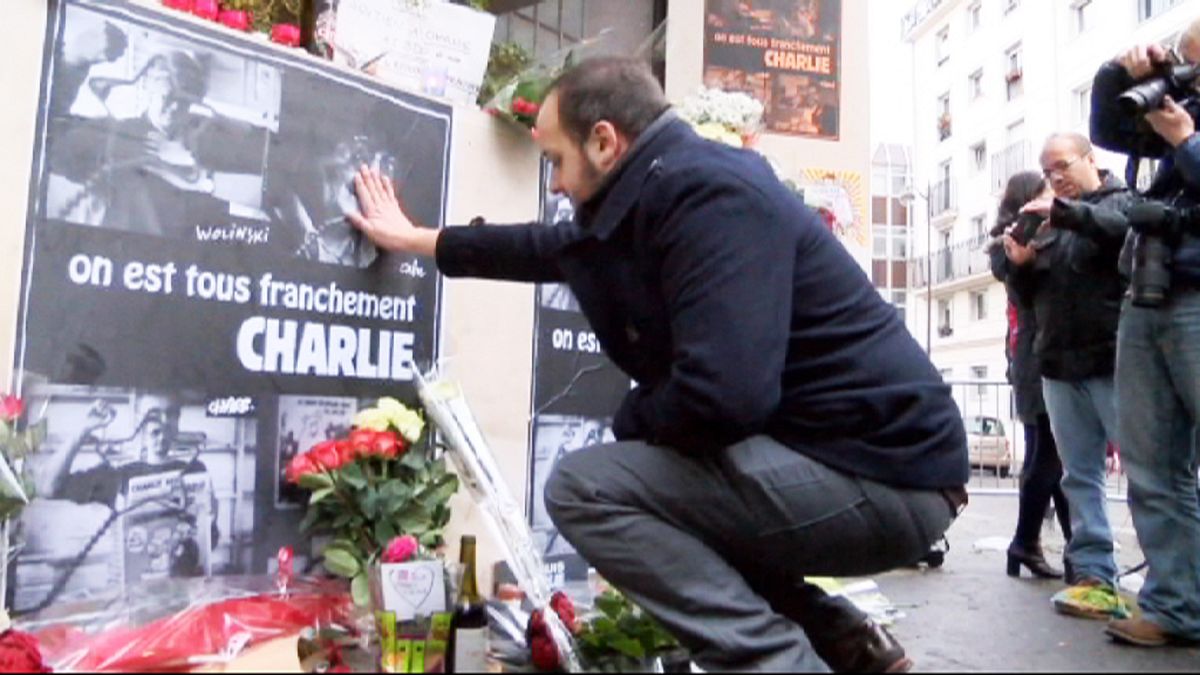This year has been the deadliest in a decade for journalists, with reporters increasingly killed away from the battlefield, new data shows. Reporters
This year has been the deadliest in a decade for journalists, with reporters increasingly killed away from the battlefield, new data shows.
Reporters Without Borders (RSF) says 110 journalists were killed in 2015, up from 66 last year.
RSF said nearly two-thirds of journalists who died in 2015 were killed in countries supposedly at peace, despite the traditional assumption that war reporting is the most dangerous role.
The most high-profile case was the Charlie Hebdo massacre, when the Kouachi brothers gunned down a dozen people at the satirical magazine’s Paris offices, including eight journalists: cartoonists Charb, Cabu, Tignous, Wolinski and Honoré, and reporters Elsa Cayat, Mustapha Ourad and Bernard Maris.
Christophe Deloire, RSF Secretary-General, said: “The 110 journalists killed this year need a response that matches the emergency. A special representative of the United Nations Secretary-General for the safety of journalists must be appointed without delay.”
Killed in the line of duty?
The very instability that has seen 110 journalists killed has also brought uncertainty about the figures.
For instance, there are question marks over the deaths of 43 of the journalists, in relation to whether they were killed in connection with their work.
RSF says this incertitude reflects “the problem of impunity for crimes of violence against journalists in many regions of the world”, citing regions such as Latin America, Asia-Pacific, Middle East and sub-Saharan Africa.
‘War came to us’
RSF’s report quotes Charlie Hebdo publisher Riss as saying: “We almost never sent journalists to war zones … On January 7th, war came to us.”
The quote was used as the campaign group revealed a clear trend in 2015’s figures: two-thirds of victims in 2014 were killed in war zones, compared to just one third this year.
The Charlie Hebdo massacre has clearly influenced this trend, with France becoming the third-deadliest place to be a journalist.
But it’s not just Charlie Hebdo influencing this change. The report cites other countries, such as India and Mexico, where reporters covering organised crime have been exposed to increasing violence. Nine journalists were killed in India and eight in Mexico during the last year.
Not just professionals
In addition, 27 non-professional ‘citizen’ journalists were killed.
RSF said one of the most shocking cases was that of four Bangladeshi bloggers who were hacked to death.
A branch of al-Qaeda in the Indian subcontinent claimed responsibility for the deaths of the bloggers, who ‘advocated tolerance, free speech and freedom of thought’
“The passivity of the Bangladeshi authorities in the face of this bloodbath has fostered a climate of impunity that is extremely dangerous for citizen journalists,” RSF said.
